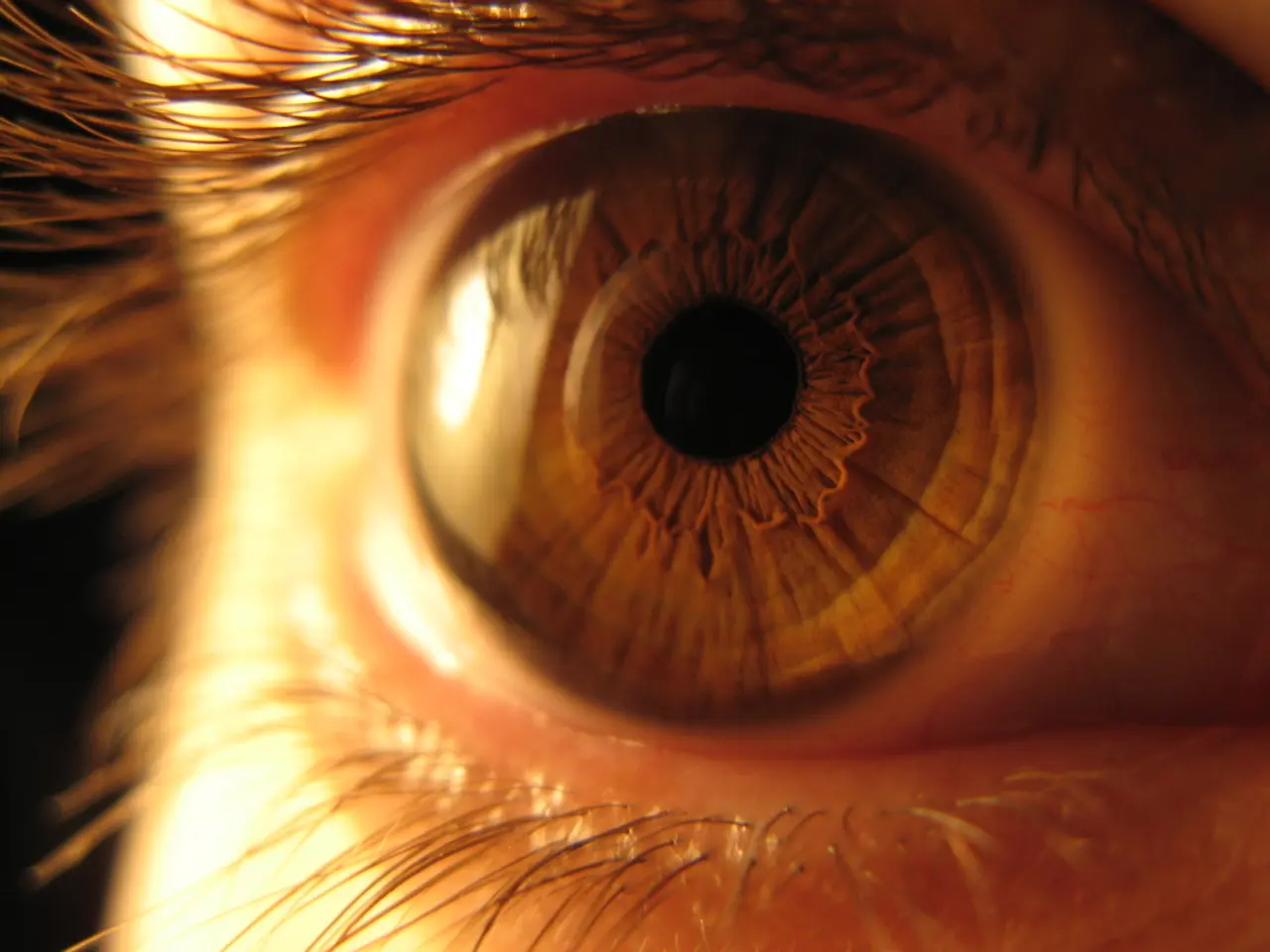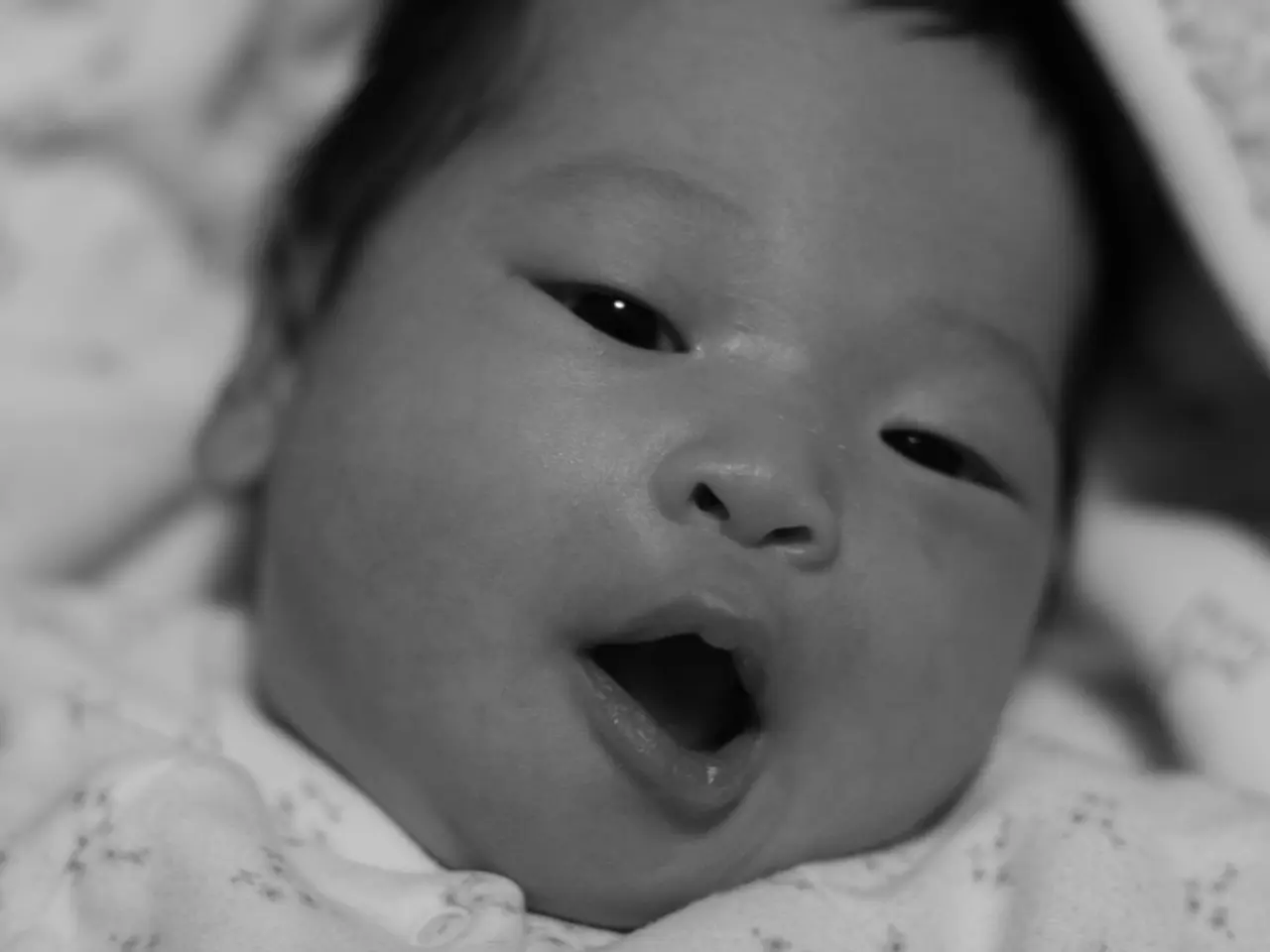Tearful Sobbing Causing Headache: Insight into the Symptom's Cause
Headaches following a bout of crying are a common experience for many, but the reasons behind this phenomenon are not widely understood. A combination of physiological and emotional factors is thought to be responsible for these headaches.
Dehydration, caused by fluid loss during crying, is a well-known trigger for headaches. The physical act of crying and emotional stress often lead to muscle tension, particularly in the head, neck, and face, contributing to headache pain. Changes in blood flow and increased sinus pressure due to tear production and nasal congestion can also play a role. Intense emotions and exhaustion from crying can also trigger headaches.
Effective treatments for headaches after crying include hydration, muscle relaxation, stress relief, and managing sinus pressure. Drinking plenty of water to rehydrate and counteract fluid loss is crucial. Gentle neck and shoulder stretches or physical therapy exercises can help relieve muscle tension, while relaxation techniques and posture retraining have been shown to reduce headache frequency and intensity, especially for tension-type headaches related to muscle tightness. Allowing time for emotional and physical recovery can help alleviate fatigue-related headaches. Using warm compresses or steam inhalation may reduce sinus pressure, and stress management practices like mindfulness, deep breathing, or other relaxation exercises can help reduce emotional stress contributing to headaches.
Crying may activate the autonomic nervous system, which, along with the limbic system, can send signals to the lacrimal glands, producing tears. If tears drain into the sinuses and mix with mucus, they can cause a runny nose and pressure in the sinuses, potentially leading to sinus headaches.
Sinus headaches are not common and are usually a result of sinusitis. They may cause pain and pressure across the forehead, cheeks, or around the eyes and may worsen with sudden movements or leaning forward. Sinus headaches may be mistaken for migraines due to similar symptoms such as pain across the nose and behind the eyes and a runny nose. However, migraines are a common type of headache, affecting around 15% of Americans, and the pain from a migraine is often on one side but can occur anywhere across the face, head, and neck.
Migraine attacks may occur due to dysregulation of the sympathetic nervous system, which is part of the autonomic nervous system. Along with head pain, migraines may also cause nausea, vomiting, sensitivity to light, sound, or smells, and treatment options include over-the-counter pain medications, triptans, and resting in a cool, dark, quiet room.
Tension headaches are a type of headache that a person may experience after crying. These primary headaches, not caused by another condition, are characterised by pain on both sides of the head, neck, or face, a pain that feels like a tight vice or band around the head, and a tender feeling in the affected area which may worsen with touch.
If a person experiences frequent headaches that impact their quality of life, they may wish to discuss potential causes and treatments with a doctor. A doctor can provide medications for persistent migraine and tension headaches and discuss other prevention methods, such as stress management, good posture, and regular sleep and exercise routines.
Stress is a common trigger for migraines, with 80% of migraine sufferers reporting stress as a common trigger and 57.7% reporting fatigue as another. This suggests a possible connection between crying and migraine attacks.
In summary, headaches after crying stem from a combination of dehydration, muscle tension, altered blood flow, and emotional stress. Treatment focuses on rehydration, muscle relaxation, stress relief, and managing sinus pressure to provide effective relief. Physical therapy and relaxation techniques are especially useful in addressing the tension component of these headaches.
- The physiological and emotional factors behind headaches after crying include dehydration, muscle tension, and changes in blood flow.
- Muscle tension, particularly in the head, neck, and face, contributes to headache pain following crying.
- Sinus pressure due to tear production and nasal congestion can play a role in causing headaches after crying.
- Drinking plenty of water is crucial for rehydration and counteracting fluid loss that triggers headaches after crying.
- Gentle neck and shoulder stretches can help relieve muscle tension causing headaches associated with crying.
- Stress management practices like mindfulness, deep breathing, or other relaxation exercises can help reduce emotional stress contributing to headaches.
- The activation of the autonomic nervous system during crying can send signals to the lacrimal glands, potentially leading to sinus headaches.
- Sinus headaches may worsen with sudden movements or leaning forward and can be mistaken for migraines due to similar symptoms.
- Migraines affect around 15% of Americans and are usually characterized by pain on one side but can occur anywhere across the face, head, and neck.
- Migraines may be triggered by dysregulation of the sympathetic nervous system and can cause nausea, vomiting, sensitivity to light, sound, or smells.
- Tension headaches are a common type of headache experienced after crying and are characterized by pain on both sides of the head, neck, or face.
- A doctor can provide medications for persistent migraine and tension headaches and discuss other prevention methods like stress management, good posture, and regular sleep and exercise routines.
- Stress is a common trigger for migraines, with 80% of migraine sufferers reporting stress as a common trigger.
- A person may wish to discuss potential causes and treatments for frequent headaches impacting their quality of life with a doctor.
- Besides headaches, other medical-conditions such as dermatitis, psoriasis, arthritis, cancer, multiple sclerosis, HIV, hepatitis, ankylosing spondylitis, Crohn's disease, and neurological disorders can cause pain and require established treatments.
- In the context of health-and-wellness and mental-health, it's important to prioritize stress management, self-care, and mental health awareness to minimize headache triggers like crying.
- The predictive Qulipta drug is under clinical research to treat migraines and may provide future treatment options for headache sufferers.




